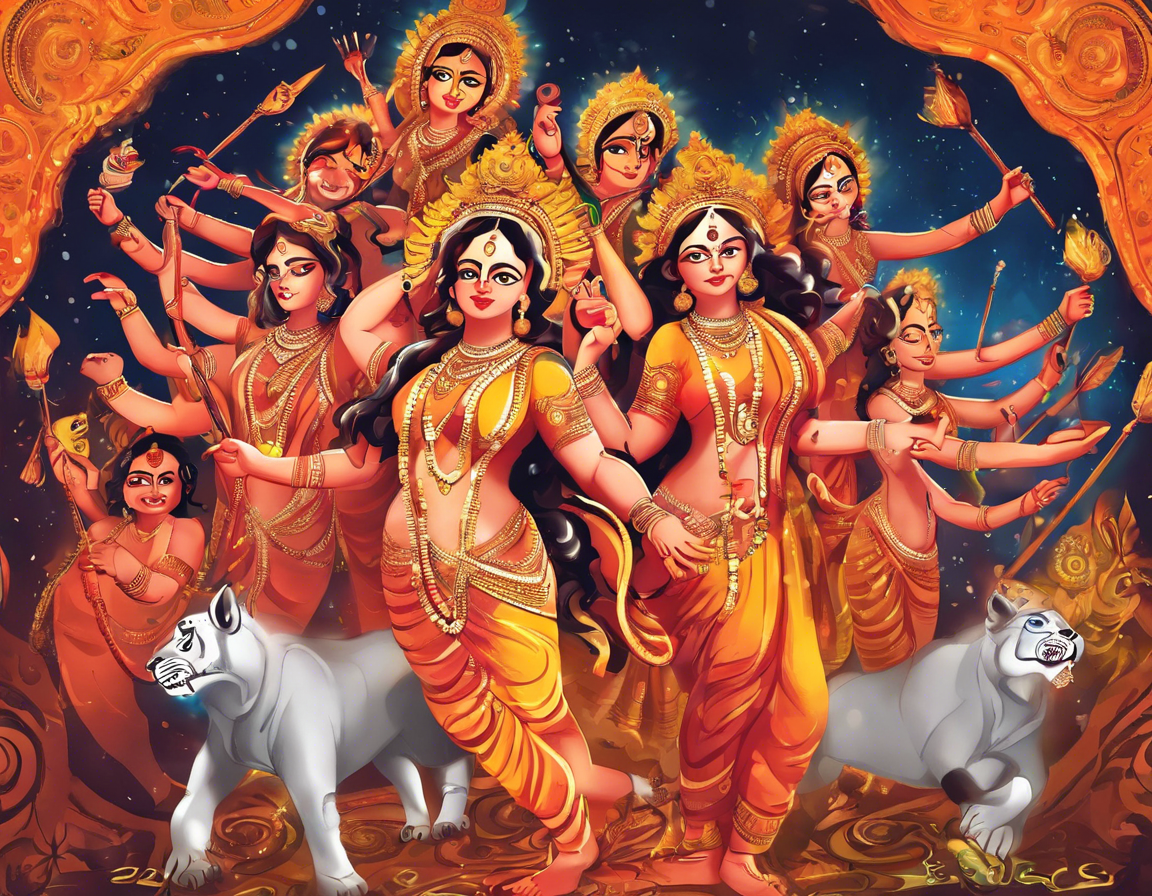Durga Puja is one of the most vibrant and significant Hindu festivals, especially celebrated with great enthusiasm in the eastern parts of India, particularly in West Bengal, Assam, Bihar, Jharkhand, Odisha, Tripura, and surrounding regions. This auspicious festival marks the victory of the goddess Durga over the demon Mahishasura, symbolizing the victory of good over evil. The festival usually falls in the months of September or October, typically lasting for five days, although preparations commence months in advance.
Origins and Significance of Durga Puja
The legend associated with Durga Puja varies from region to region, but the essence remains consistent – the triumph of good over evil. According to mythology, goddess Durga combines the powers of various gods to combat the demon Mahishasura. She symbolizes shakti (power) and embodies the divine feminine force.
Rituals and Traditions
Durga Puja involves elaborate rituals and traditions, starting with Mahalaya, which marks the beginning of Devi Paksha and the end of Pitru Paksha. During this time, people pay homage to their ancestors through tarpan and offerings.
Mahashashthi: The festival kicks off with prayers and rituals to invite the goddess to Earth, symbolized by the unveiling of the face of the idol.
Mahasaptami and Mahashtami: These days are dedicated to the worship of the goddess and include elaborate rituals, including the famous Kumari Puja, where young girls are worshipped as manifestations of the goddess.
Mahanavami: On this day, the goddess is worshipped as Mahisasuramardini, commemorating her victory over the demon Mahishasura.
Vijaya Dashami: The final day of Durga Puja, where idols are immersed in water bodies, symbolizing the departure of the goddess and her journey back to Mount Kailash.
Celebrations Worldwide
While Durga Puja is primarily celebrated in India, particularly in West Bengal, the festival has gained popularity worldwide. Countries like Bangladesh, Nepal, the United States, the United Kingdom, Canada, Australia, and many others host grand Durga Puja celebrations, attracting people from various cultural backgrounds.
Key Features of Durga Puja Celebrations
-
Pandal Hopping: One of the highlights of Durga Puja is visiting the beautifully decorated pandals displaying intricate artwork and themes.
-
Traditional Attire: People, especially in West Bengal, don new clothes, with women dressed in traditional sarees and men in kurta-pajamas.
-
Cultural Programs: Cultural events, including music, dance, and drama performances, are organized at various pandals.
-
Food Delights: Street food stalls offering a plethora of delectable dishes are a common sight during the festival.
Durga Puja in the Digital Age
In recent years, Durga Puja has embraced technology, with pandals incorporating virtual tours and livestreaming of rituals for devotees worldwide. Social media platforms also play a crucial role in connecting people and sharing the festive spirit, making Durga Puja a global celebration.
FAQs (Frequently Asked Questions)
1. What is the significance of Durga Puja?
Durga Puja symbolizes the victory of good over evil, with goddess Durga representing the divine feminine force and shakti.
2. When is Durga Puja typically celebrated?
Durga Puja usually falls in the months of September or October, lasting for five days.
3. How is Durga Puja celebrated?
The festival involves elaborate rituals, including unveiling the idol’s face, Kumari Puja, and immersion of the idols on Vijaya Dashami.
4. Where is Durga Puja celebrated?
Durga Puja is primarily celebrated in West Bengal, India, but it also has significant celebrations in other regions and countries.
5. How can I participate in Durga Puja celebrations?
You can visit pandals, witness the rituals, enjoy cultural programs, savor delicious food, and partake in the festive spirit.
6. Is Durga Puja only a religious festival?
While Durga Puja has religious roots, it has evolved into a cultural extravaganza that transcends religious boundaries, attracting people from diverse backgrounds.
7. What are some traditional dishes enjoyed during Durga Puja?
Popular dishes during Durga Puja include khichuri, labra, begun bhaja, chingri macher malai curry, and sweets like sandesh and rosogolla.
8. How can I experience Durga Puja festivities outside India?
Various organizations and communities worldwide organize Durga Puja events, ensuring that people can experience the festival’s essence globally.
9. What should I wear during Durga Puja celebrations?
Traditional attire such as sarees for women and kurta-pajamas for men are common during Durga Puja celebrations.
10. How has technology impacted Durga Puja celebrations?
Technology has modernized Durga Puja celebrations through virtual tours, livestreaming of rituals, and social media platforms, enhancing global participation.
Durga Puja remains not only a religious festival but also a cultural extravaganza that unites people from different backgrounds in celebration. The vibrancy, traditions, and community spirit associated with Durga Puja make it a unique and unforgettable experience for all who partake in its festivities.
